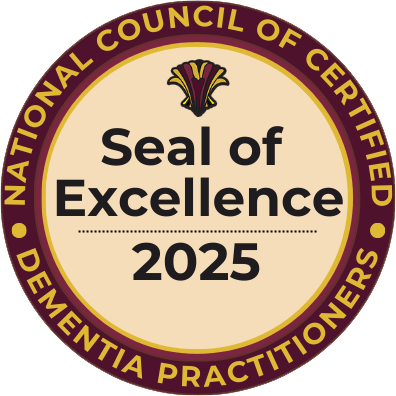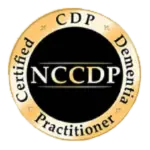Sundowning is a common phenomenon associated with Alzheimer’s and related dementias, where individuals experience increased confusion, agitation, and restlessness during the late afternoon or evening hours. This condition, known as sundowning, can make caregiving challenging and often requires tailored approaches to effectively support persons living with dementia.
Understanding the causes and management strategies for sundowning is crucial for improving the quality of care and enhancing the well-being of individuals experiencing this symptom.
Understanding Sundowning
Sundowning refers to the behavioral changes seen in persons living with dementia, particularly during the latter part of the day. These changes may include mood swings, confusion, anxiety, or even aggression. The exact cause of sundowning is not fully understood, but it is believed to result from a mix of factors including disruptions in the body’s internal clock, fatigue, environmental factors, and the progression of Alzheimer’s and related dementias.
Unlike other symptoms of dementia, sundowning tends to follow a predictable pattern, with symptoms intensifying as daylight fades. Caregivers often notice that persons with dementia who may have been calm during the day begin to exhibit signs of distress during the evening hours.
Causes of Sundowning in Dementia
While the root causes of sundowning are still being researched, several theories offer insight into why it occurs. Factors that may contribute to sundowning include:
- Circadian Rhythms and Sleep Disturbances: Many people living with dementia experience disruptions to their internal body clock, known as circadian rhythms. This can lead to difficulty distinguishing between day and night, resulting in confusion, insomnia, and increased agitation during the evening hours.
- Fatigue: As the day progresses, persons with dementia may become more tired, leading to irritability and heightened confusion, both of which can contribute to sundowning behaviors.
- Environmental Triggers: A change in lighting during the evening, such as dimming or fading natural light, may increase disorientation for persons with dementia. Noise and activity levels also tend to decrease at this time, which can make the environment feel more unsettling for those with cognitive impairments.
- Unmet Needs: Sometimes, sundowning is a result of basic needs not being met, such as hunger, thirst, or discomfort. As communication becomes more challenging in later stages of dementia, individuals may express their distress through behaviors associated with sundowning.
Symptoms of Sundowning
Recognizing the signs of sundowning is essential for caregivers and healthcare professionals. While symptoms vary, common signs include:
- Increased confusion or disorientation as evening approaches.
- Restlessness or pacing.
- Heightened anxiety or fear.
- Irritability or mood swings.
- Difficulty sleeping, which may result in nighttime wandering.
- Agitation, sometimes escalating to verbal or physical aggression.
Early detection of sundowning behaviors allows for the implementation of strategies to minimize their impact on both the individual and the caregiver.
Managing Sundowning
Although sundowning can be distressing, several strategies can help manage these behaviors and provide relief for both caregivers and persons living with dementia. Key approaches include:
- Creating a Calm Environment: Keeping the surroundings familiar, well-lit, and free of unnecessary noise can help reduce confusion and anxiety during the evening. Soft lighting that mimics natural daylight may also aid in reducing disorientation.
- Maintaining a Routine: A consistent daily schedule can provide structure and help regulate the body’s internal clock. Limiting naps during the day and promoting daytime activities may encourage better sleep patterns at night, reducing the intensity of sundowning symptoms.
- Monitoring Triggers: Identifying potential triggers for sundowning can assist in avoiding behaviors that exacerbate agitation. For example, minimizing caffeine or sugar intake in the afternoon, ensuring the person is comfortable, and maintaining a calm environment can all contribute to a reduction in symptoms.
- Physical Activity: Encouraging gentle physical activity during the day can promote better sleep and help reduce restlessness. Simple activities like walking or stretching can have a calming effect and aid in managing sundowning.
- Engaging in Soothing Activities: During the late afternoon and evening, introducing calming activities such as listening to soft music, reading, or engaging in light conversation can help ease the transition to bedtime.
- Limit Stimulants: Avoiding stimulants like caffeine and sugar, especially later in the day, can help mitigate restlessness and agitation. Instead, offer water, herbal tea, or snacks that promote relaxation.
- Ensuring Comfort: Ensuring that the person with dementia is comfortable and free of pain, hunger, or other physical discomforts can significantly reduce the risk of sundowning behaviors. If they are uncomfortable, it can be harder for them to relax and fall asleep, potentially worsening sundowning symptoms.
Sundowning and the Role of Professional Training
For caregivers, managing sundowning can be physically and emotionally challenging. Many caregivers may feel overwhelmed by the behavioral changes that occur as Alzheimer’s and related dementias progress. This is where professional training and certifications come into play.
Alzheimer’s and dementia certifications provide caregivers with the knowledge and tools necessary to address the complexities of dementia care, including sundowning. By learning specialized techniques and understanding the science behind dementia behaviors, caregivers can offer compassionate, effective care.
Participation in an Alzheimer’s disease and dementia care seminar allows caregivers to expand their skill set and gain insights into new approaches for managing challenging behaviors, such as sundowning. These educational opportunities not only improve the caregiver’s confidence but also enhance the quality of life for persons living with dementia.
Why Addressing Sundowning Early is Critical
Early identification of sundowning symptoms is crucial for developing a care plan that supports both the person living with dementia and the caregiver. Without proper management, sundowning behaviors can lead to sleep disturbances, increased stress, and a diminished quality of life for everyone involved.
Addressing sundowning proactively through a combination of environmental changes, behavioral strategies, and professional training can reduce its impact, leading to better overall care and improved outcomes for persons with dementia.
How NCCDP Prepares Caregivers for Compassionate Dementia and Sundowning Management
At the National Council of Certified Dementia Practitioners (NCCDP), we provide comprehensive training that equips caregivers and healthcare professionals with the knowledge and skills needed to handle complex dementia-related behaviors, including sundowning. Through our Alzheimer’s and dementia care training, participants gain valuable insights into managing sundowning, along with other challenging aspects of dementia care.
NCCDP offers a range of educational opportunities, including the Certified Dementia Practitioner (CDP) certification. This program ensures caregivers are well-prepared to deliver compassionate, expert care to persons living with dementia. We also offer Alzheimer’s disease and dementia care seminars that provide in-depth training on managing behavioral symptoms like sundowning, helping caregivers reduce stress and improve care outcomes.
By enrolling in NCCDP’s Alzheimer’s and dementia certifications, caregivers are well-equipped to provide high-quality, person-centered care.























